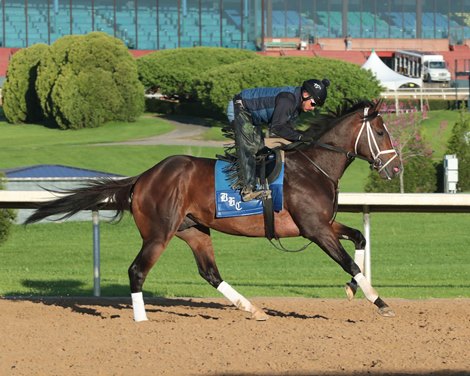During the Oct. 3 New York State Gaming Commission meeting, the state’s equine medical director Dr. Scott Palmer provided an update on the rash of fatalities that happened at Saratoga Race Course this summer.
Palmer noted that while the review by NYSG, the New York Racing Association, and the Horseracing Integrity and Safety Authority of the 17 fatalities is still ongoing, there have been several key preliminary findings.
He said the 17 fatalities represented approximately 1% of the total number of horses stabled at Saratoga during the meet. And the percentage of fatalities was consistent with the number of deaths during the meet in 2012, 2016, and 2019, but lower than in 2017 and 2020 when there were 21 fatalities.
But that is where the data begins to deviate from historical patterns.
Among the fatalities at Saratoga, 92% of exercise-associated fatal musculoskeletal injuries occurred at the fetlock joint. Palmer cited published research from New York and California over the past 10 years showing fetlock joints being the cause of 48% and 50% of fatal musculoskeletal injuries.
Sign up for BloodHorse Daily
“I was shocked by the 92%. I’ve been doing this a long time; never seen anything like it,” Palmer said.
Palmer pointed to another common trait among injuries: fatigue. He said of the 13 exercise-associated injuries, all but one happened in the final furlongs of a race or when the horse was galloping out after the race.
Another “significant” factor was the “unprecedented amount of rainfall” during the meet.
The 11 inches of rain were two more than 2021 and three more than 2022. As a result, 65 races, or 16%, changed surface during the meet. By comparison, only 17 (4%) were moved the previous year. This placed the moisture content in the crosshairs of the investigation.
In 2022, there were two exercise-related fatalities on the main dirt track where the spatial and temporal distribution of moisture was consistent. However, this year there were double when the distribution was less consistent.
The matters of fatigue and moisture in the track surface are intertwined.
“It’s a clear indication for aggressive research to be done looking at new ways to look at moisture,” Palmer said. “We have to look at rainfall differently.”
While the deep dive into the causes of the fatalities and potential remedies to prevent future tragedies continues, Palmer put forth a suggestion to help minimize future deaths.
“Recently, there have been conversations about possibly scanning all horses prior to racing with a Positron Emission Tomography scan,” he said.
He said that with a PET scan’s ability to detect active metabolic processes, it can “often detect abnormalities in bone or soft tissue before those abnormalities can be detected with other imaging modalities,” such as radiography, MRI or CT scans. They are not a perfect tool as they cannot detect whether a horse is at risk for catastrophic injury.
To try to mitigate catastrophic injuries, Palmer said a screening process needs to be “scalable, practical, affordable, and applicable to every horse while training or while racing without regard to any clinical indication of injury.” He pointed to biometric sensors as a “check engine light,” which can detect subtle abnormalities that the human eye cannot catch.










Leave feedback about this